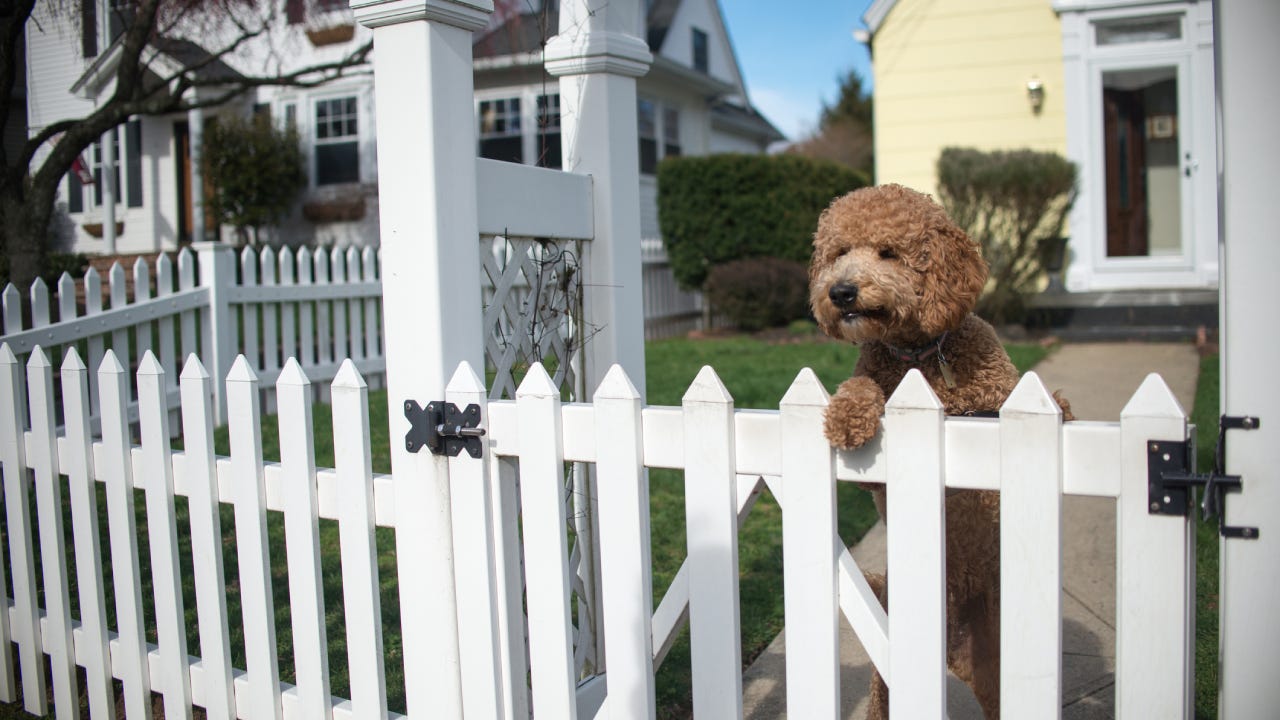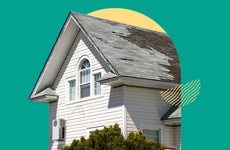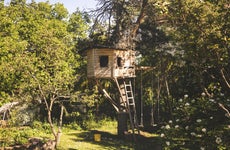Does home insurance cover fences?

The Bankrate promise
At Bankrate, we strive to help you make smarter financial decisions. To help readers understand how insurance affects their finances, we have licensed insurance professionals on staff who have spent a combined 47 years in the auto, home and life insurance industries. While we adhere to strict , this post may contain references to products from our partners. Here's an explanation of . Our content is backed by Coverage.com, LLC, a licensed entity (NPN: 19966249). For more information, please see our .
To effectively manage your property, it helps to understand whether your homeowners insurance extends to covering your fence. While your policy is designed to shield you from financial strain resulting from damage to your home’s structure, standard coverage also includes other structures on your property, like fences. However, the specifics of this coverage can vary, largely depending on the cause of the damage. With the help of Bankrate’s insurance expertise, you can feel more confident navigating the nuances of fence coverage and understand the protection your policy may offer.
What part of a home insurance policy might cover fence damage?
When assessing the scope of your homeowners insurance, it’s important to understand how it might extend to structures beyond your home’s main living space, such as your fence. Here’s a breakdown of the policy components that are particularly relevant:
- Other structures coverage: This portion of your policy is designed to financially protect structures on your property that stand separate from your home. This typically includes fences, alongside sheds and detached garages. For instance, if your home is insured for $400,000, up to 10 percent of that amount (or $40,000 in this example) can typically be allocated to repair or replace other structures like fences in the event of damage due to a covered peril.
- Covered perils: Knowing which perils your policy covers is crucial. Standard policies typically cover damages caused by events such as fires, theft and windstorms. However, it’s common for policies to exclude natural disasters like floods and earthquakes unless additional coverage is purchased. Therefore, coverage for your fence likely wouldn’t be extended in these events under your standard policy.
- Named perils vs. open perils policies: Policies are generally categorized based on the type of perils they cover. Named perils policies only cover damages caused by events specifically listed in the policy, whereas open perils policies cover all sources of damage unless they are explicitly excluded. Both types of policies involve a deductible, meaning you’ll have a specified amount deducted from your claims check that you would be responsible for out of pocket.
By familiarizing yourself with these aspects of your homeowners insurance policy, you can better navigate your coverage and understand how it applies to fence damage, ensuring you’re prepared in case you need to file a claim.
What kind of fence damage is covered by home insurance?
Here is a quick look at some of the most common causes of fence damage and whether or not you could file a home insurance claim for them.
Wear and tear
Wear and tear is not covered by home insurance for your fence or any other part of your home. Your homeowners insurance company holds you responsible for performing the required maintenance around your home.
In fact, if you neglect maintenance, your claim could be denied. Say a strong wind blows over your fence. If your home insurance company finds that the fence was already falling apart because you were not maintaining it properly, coverage might be denied.
Tree falls on the fence
Whether the tree was on your property or your neighbors, you can file a claim through your home insurance, since it was your property that was damaged. If the tree is on your neighbor’s property and your insurance company finds that the limb or tree fell because your neighbor was negligent in their tree maintenance, it may try to recover the costs from your neighbor’s insurer.
The same can hold true for you: if you fail to properly maintain your trees and one falls or drops a limb on your fence, your insurance company might deny coverage.
Storms
Standard home insurance policies offer coverage for repairs of damaged fences after a windstorm, hailstorm or a lightning strike.
But if you live in a coastal area, especially if you are prone to hurricanes, your policy might exclude wind damage to fences from named weather events. Review your policy specifics to see if you should seek out a windstorm insurance endorsement or your policy may already include a separate windstorm deductible for named storms. A “hurricane deductible” is typically 1 percent to 5 percent of your home’s insured value.
Vandalism
Homeowners insurance usually covers vandalism. So if your fence gets damaged by vandals or graffiti, your policy could pay out for the necessary repairs (up to your policy limits).
A car hit the fence
While your home insurance can pay for repairs to a fence hit by a vehicle, you may also use the responsible driver’s property damage liability coverage, which is required in most states. In other words, because the damage is their fault, their car insurance liability coverage should pay for the property damage they caused to your fence.
Termites
Termites, along with all other pests and infestations, are not covered by homeowners insurance. Your home insurance company considers termite damage a home maintenance issue, which means you will need to cover the cost of getting rid of the termites and repairing your fence.
How do you file a claim for fence damage?
Filing a claim for fence damage can be a straightforward process. Here’s how you can go about it:
- Document the damage: Begin by taking clear, contextual photos of the fence damage before making any repairs. This visual evidence is vital for your claim.
- Assess the need to file a claim: Consider whether the damage warrants a claim. Remember to factor in your deductible. For instance, if your deductible is $1,000, but the repairs might only cost a few hundred dollars, it might be more economical to handle the repairs out-of-pocket rather than filing a claim, which could affect your future home insurance premiums.
- Contact your insurance provider: If the damage is significant and you believe it surpasses your deductible, initiate the claims process. This can usually be done by calling your insurer, contacting your insurance agent directly or using the insurer’s website or mobile app to submit a claim online.
- Follow the insurer’s guidance: Your insurance company may send a claims adjuster to inspect the damage or ask you to upload the photos you’ve taken to their app or website. Follow your insurer’s instructions carefully and stay in touch with your agent to ensure a smooth claim process.
Adhering to these steps can help ensure you receive the financial support you need to repair or replace your damaged fence.
Frequently asked questions
-
-
It depends. If you’re changing your fence or updating it for cosmetic reasons, you typically do not need to notify your insurance provider of the changes unless they add value to the fence. However, if you’re upgrading your fence and think it could cost more to replace than your prior fence, not alerting your home insurance company of the changes could cause you to be underinsured with your other structures coverage. In that case, you may want to review your policy details and speak to your insurance agent about your new fence to ensure that you have adequate protection.
-
Your other structures coverage typically extends to the structures on your property that are not attached to your house. This may include structures like a fully finished detached garage or a simple backyard shed, and may also include coverage for in-ground pools, driveways and gazebos.
-
Remember that you usually get up to 10 percent of your dwelling insurance amount for other structures coverage. If you have multiple other structures or high-value ones, like in-law quarters with a kitchen and bath or an extremely long fence, the standard coverage limit might not be enough. In that case, contact your insurance professional to determine if you can increase your other structures coverage policy limit.
-
The depreciation life of a fence can significantly vary based on the materials used, maintenance habits and environmental exposure. For wood fences, the lifespan is particularly influenced by the type of wood and whether it’s treated with stain and waterproofing sealants. When properly maintained, certain wood types can last anywhere from 15 to 20 years or more. Staining and waterproofing can further extend this lifespan by protecting the wood from moisture, pests and decay. Metal or vinyl fences generally offer longer durability, with lifespans extending 20 to 30 years or more due to their inherent resistance to weather and pests. These factors are crucial in understanding the potential longevity of your fence and its value over time, especially when considering insurance implications.
-
Related Articles



